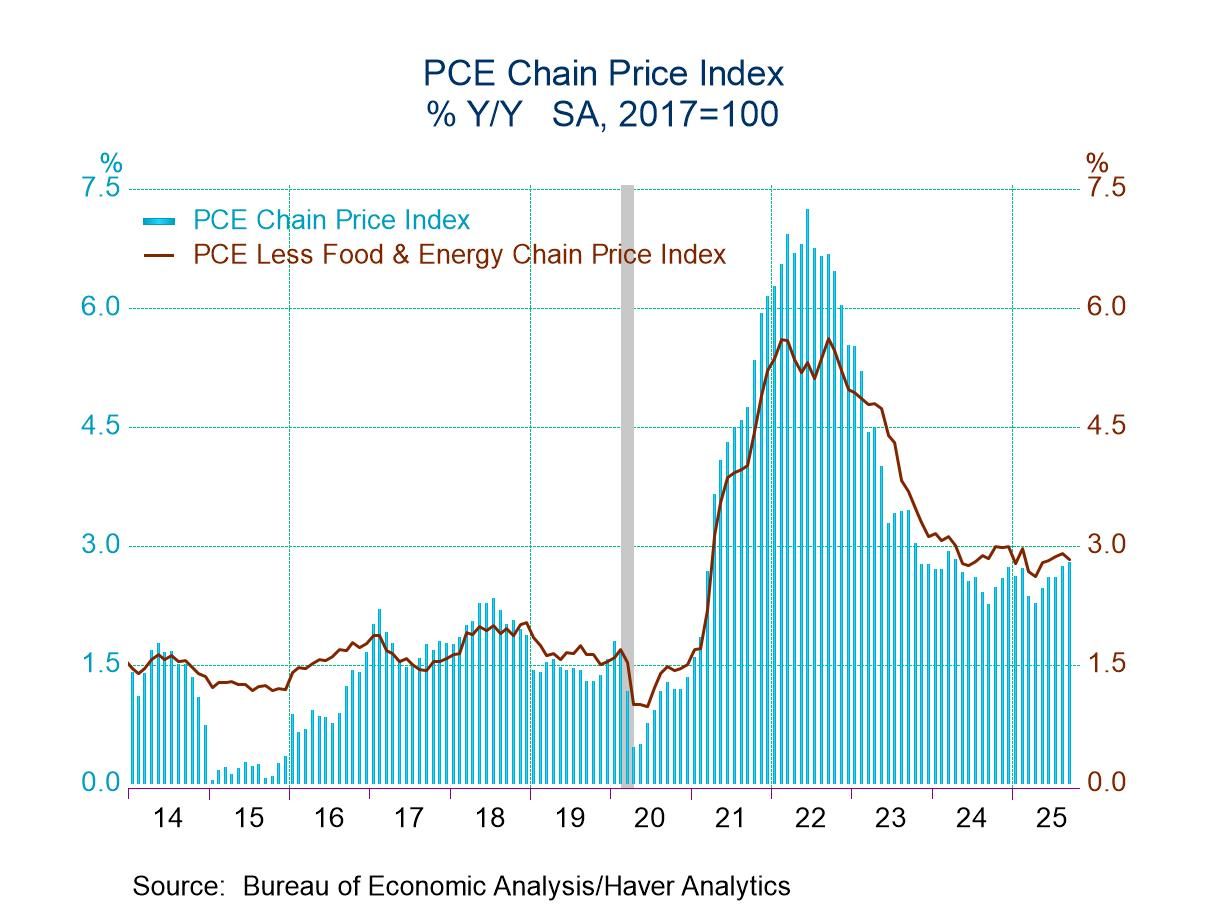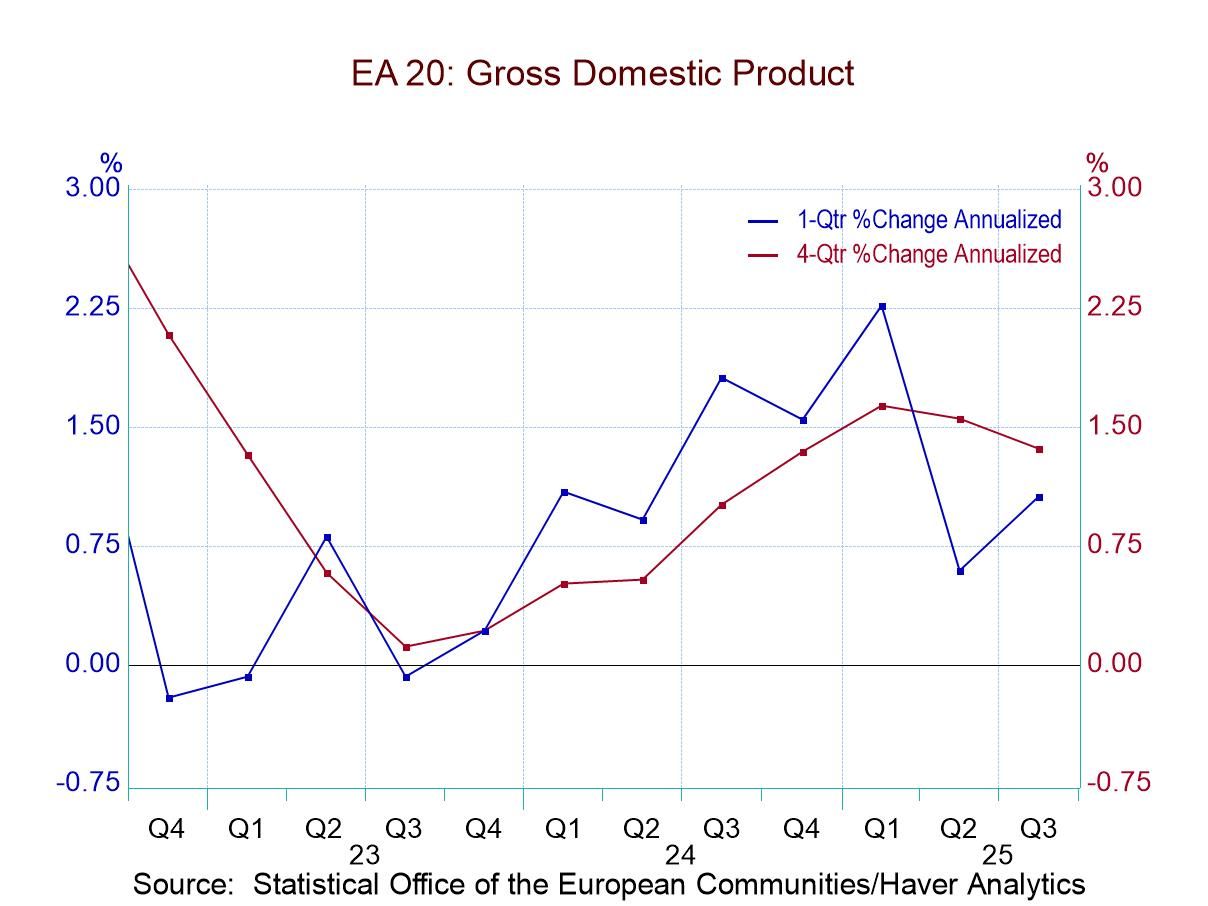 Global| Jun 29 2006
Global| Jun 29 2006Hesitant Improvement in German Labor Markets; Employment Still Flat, but Job Vacancies Are Increasing
Summary
We last wrote about German labor markets three months ago. Since then there have been marginal changes. Employment shows signs of slight growth, according to seasonally adjusted labor force data. Unemployment by the ILO definition is [...]
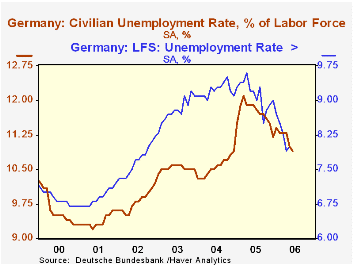
We last wrote about German labor markets three months ago. Since then there have been marginal changes. Employment shows signs of slight growth, according to seasonally adjusted labor force data. Unemployment by the ILO definition is basically steady at a level more than a full percentage point below year-ago amounts, although the more popular measure in Germany, "registered" unemployment, has shown less improvement. At the same time, job vacancies have been rising markedly, indicating some hope for later employment gains.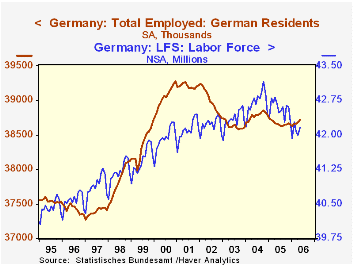
Total employment as measured in the labor force survey was 38.72 million in May, up 43,000 from April and 0.2% from May 2005. While this is a small increase, it still represents growth, a contrast to last year's experience when total employment contracted slightly from 2004.
Accompanying unemployment has decreased, although as we have explained before, in the face of stagnant employment, the lower unemployment is a result of people withdrawing from the labor force. This is seen in the second graph. A more realistic picture of labor conditions in Germany is perhaps given by the preferred local measure of joblessness, "registered unemployment". This rate is down from a year ago, but has moved in fits and starts and remains above its average for 2004.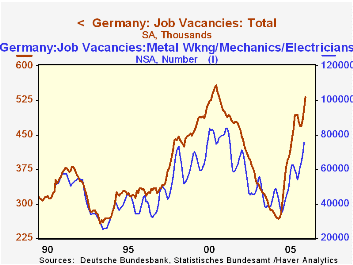
An optimistic note among the labor market data released today is the number of job vacancies. These are climbing, and at 531,000 for June, they are approaching their all-time high of 557,000 set in December 2000. Further, the gains are widespread among occupational groups in the German economy. Over the last year, total vacancies have increased 128,000; of these, 28,000 are in metal-working and machining jobs, 12,000 in administrative service functions, and 11,000 in construction. Nearly every category showed some year-on-year increase. So labor demand is looking better. We hope that soon translates into more workers.
| Germany: SA, ex as noted | June 2006 | May 2006 | Apr 2006 | Year Ago | 2005 | 2004 | 2003 |
|---|---|---|---|---|---|---|---|
| LFS Employment (mil) | -- | 38.72 | 38.68 | 38.66 | 38.67 | 38.78 | 38.63 |
| Change (thous) | -- | +43 | +18 | +5 | -12 | 16 | -11 |
| Yr/Yr % Chg NSA | -- | +0.2 | -0.4 | +0.5 | -0.3 | ||
| Unemployment Rate (%, ILO Def.) |
-- | 8.0 | 7.9 | 9.2 | 9.2 | 9.2 | 8.8 |
| Registered Unemployment Rate (%) | 10.9 | 11.0 | 11.3 | 11.9 | 11.6 | 10.6 | 10.5 |
| Job Vacancies (thous) | 531 | 506 | 485 | 403 | 394 | 225 | 258 |
Carol Stone, CBE
AuthorMore in Author Profile »Carol Stone, CBE came to Haver Analytics in 2003 following more than 35 years as a financial market economist at major Wall Street financial institutions, most especially Merrill Lynch and Nomura Securities. She had broad experience in analysis and forecasting of flow-of-funds accounts, the federal budget and Federal Reserve operations. At Nomura Securities, among other duties, she developed various indicator forecasting tools and edited a daily global publication produced in London and New York for readers in Tokyo. At Haver Analytics, Carol was a member of the Research Department, aiding database managers with research and documentation efforts, as well as posting commentary on select economic reports. In addition, she conducted Ways-of-the-World, a blog on economic issues for an Episcopal-Church-affiliated website, The Geranium Farm. During her career, Carol served as an officer of the Money Marketeers and the Downtown Economists Club. She had a PhD from NYU's Stern School of Business. She lived in Brooklyn, New York, and had a weekend home on Long Island.


